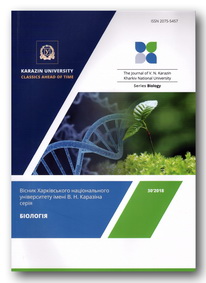Comparison of common wheat and spelt by total lipids and fatty acid levels
Abstract
Nowadays the interest of breeders, producers and consumers is going back to ancient wheat species, such as Triticum spelta, which are often considered as more valuable for healthy nutrition. In this light, we compared spelt cultivars and breeding lines with commercial common wheat cultivars by total lipid content, fatty acid levels and unsaturated/saturated ratio in grain. Lipids were extracted by Soxhlet procedure. Fatty acid composition was determined by gas chromatography. On average, the total lipid content was higher in the spelt cultivars than in the breeding spelt lines (3.04±0.24 % vs. 2.23±0.69 %, p < 0.05). There was a significant difference between the average content of total lipids in the spelt cultivars, but not the breeding spelt lines, and the common wheat cultivars (3.04±0.24 % vs. 2.44±0.57 %, p < 0.05). Six major fatty acids were found in hexaploid wheat species, with linoleic acid being the most abundant. They are ranked in order of decreasing levels as follows: linoleic > oleic >palmitic > linolenic > stearic > palmitoleic. We also detected trace amounts of 3 minor fatty acids: eicosanoic (arachidic), eicosenoic and behenic acids. Common wheat is not inferior to spelt in terms of unsaturated fatty acid levels, because the ratios of unsaturated acids to saturated ones in grain of T. spelta accessions were similar to those in commercial common wheat cultivars. The oleic acid content was higher in spelt accessions; though the linoleic acid content was higher in T. aestivum cultivars. Spring common wheat cultivar Heroinia had the most beneficial unsaturated/saturated ratio of 4.5. We detected no differences in unsaturated acid amounts between spring and winter hexaploid wheats. We observed no patterns in variability of fatty acid contents across the accessions under investigation, because the same accession can be characterized by a wide variability in one fatty acid and by a narrow range for another, and, at the same time, the same fatty acid can be very variable within one accession and little variable in another. There were no significant differences in the total lipid content and fatty acid levels between the study years for the same accession.
Downloads
References
Beleggia R., Rau D., Laidò G. et al. (2016). Evolutionary metabolomics reveals domestication-associated changes in tetraploid wheat kernels. Mol. Biol. Evol., 33(7), 1740–1753. https://doi.org/10.1093/molbev/msw050
Durante M., Lenucci M.S., Rescio L. et al. (2012). Durum wheat by-products as natural sources of valuable nutrients. Phytochem. Rev., 11(2–3), 255–262. https://doi.org/10.1007/s11101-012-9232-x
Gabrovská D., Fiedlerová V., Holasová M. et al. (2002). The nutritional evaluation of underutilized cereals and buckwheat. Food Nutr. Bull., 23(3 Suppl), 246–249. https://doi.org/10.1177/15648265020233S148
Grela E.R. (1996). Nutrient composition and content of antinutritional factors in spelt (Triticum speltal) cultivars. Sci. Food Agr., 71(3), 399–404. https://doi.org/10.1002/(SICI)1097-0010(199607)71:3%3C399::AID-JSFA609%3E3.0.CO;2-Q
Juhaimi F.A.l., Uslu N., Babiker E.E. et al. (2019). The effect of different solvent types and extraction methods on oil yields and fatty acid composition of safflower seed. J. Oleo Sci., 7, 68(11), 1099–1104. https://doi.org/10.5650/jos.ess19131
Kan A. (2015). Characterization of the fatty acid and mineral compositions of selected cereal cultivars from Turkey. Rec. Nat. Prod., 9(1), 124–134.
Peisker K.V. (1964). A rapid semi-micro method for preparation of methyl esters from triglycerides using chloroform, methanol, sulphuric acid. J. Am. Oil Chem. Sci., 41, 87–88. https://doi.org/10.1007/BF02661915
Narducci V., Finotti E., Galli V. et al. (2019). Lipids and fatty acids in Italian durum wheat (Triticum durum Desf.) cultivars. Foods, 8(6), 1–9. https://doi.org/10.3390/foods8060223
Prokhorova M.I. (1982). Methods of biochemical studies (lipid and energy metabolism. Leningrad: Publishing House of Leningrad University. 271 p. (in Russian)
Relina L.I., Suprun O.H. Boguslavskyi R.L. et al. (2020). Fatty acid composition of oil from grain of some tetraploid wheat species. Biotechnologia Acta, 13(2), 56–64. https://doi.org/10.15407/biotech13.02.056
Ruibal-Mendieta N.L., Dekeyser A., Delacroix D.L. et al. (2004). The oleate/palmitate ratio allows the distinction between wholemeals of spelt (Triticum spelta L.) and winter wheat (T. aestivum L.). J. Cer. Sci., 39(3), 413–415. https://doi.org/10.1016/j.jcs.2004.02.003
Ruibal-Mendieta N.L., Delacroix D.L., Mignolet E. et al. (2005). Spelt (Triticum aestivum ssp. spelta) as a source of breadmaking flours and bran naturally enriched in oleic acid and minerals but not phytic acid. J. Agric. Food Chem., 53(7), 2751–2759. https://doi.org/10.1021/jf048506e
Suchowilska E., Wiwart M., Borejszo Z. et al. (2009). Discriminant analysis of selected yield components and fatty acid composition of chosen Triticum monococcum, Triticum dicoccum and Triticum spelta accessions. J. Cer. Sci., 49, 310–315. https://doi.org/10.1016/j.jcs.2008.12.003
USDA (2019): National Nutrient Database. Nutrient data for product 20140 (available at https://fdc.nal.usda.gov/fdc-app.html#/food-details/169745/nutrients)
Authors retain copyright of their work and grant the journal the right of its first publication under the terms of the Creative Commons Attribution License 4.0 International (CC BY 4.0), that allows others to share the work with an acknowledgement of the work's authorship.




